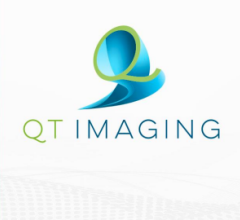April 30, 2013 — Breast brachytherapy with a strut-based applicator demonstrated low recurrence rates and minimal toxicities, according to a multi-site study with a median follow-up of four years. The research was presented at the annual meeting of the American Brachytherapy Society, held in New Orleans, April 18-20, 2013.
According to a presentation by lead author Catheryn Yashar, M.D., strut-based brachytherapy appears to be a well-tolerated, effective treatment with minimal acute and few adverse late toxicities. Local control of breast cancer recurrence was excellent (2 percent), with no hyperpigmentation or fat necrosis reported, and minimal symptomatic seroma (2 percent) and telangiectasia (2 percent).
To date, the data represents the longest follow-up of the largest group of accelerated partial breast irradiation (APBI) patients treated with the SAVI (Strut-Adjusted Volume Implant) applicator. Yashar reported on 101 patients from three institutions with a median follow-up of 48.3 months.
“APBI is an acceptable treatment for many women with early-stage breast cancer, and this longer follow-up gives further evidence that strut-based brachytherapy is versatile, safe and effective,” said Yashar, a radiation oncologist at UC San Diego Moores Cancer Center.
The cancer recurrence rate in the study was comparable to the recurrence rate reported in the literature for whole-breast irradiation, which takes six weeks and is the traditional form of radiotherapy for early-state breast cancer.
Another study of 320 patients from 11 institutions with a median follow-up of 35 months reported similarly favorable results. Robert Kuske, M.D., a radiation oncologist at Arizona Breast Cancer Specialists in Scottsdale, Ariz., observed favorably low toxicities and a local recurrence rate of 0.61 percent.
“Our study demonstrates the unique ability of strut-based devices to modulate the radiation dose, thereby sparing healthy tissue and resulting in lower toxicities.” said Kuske. “The low rates of toxicities we observed compare favorably to rates reported in studies of other forms of breast brachytherapy.”
The SAVI Collaborative Research Group, from which the data at ABS was drawn, was established to study the long-term outcomes of women treated with APBI with the SAVI device.
Strut-based brachytherapy delivers a shortened course of radiation therapy for early-stage breast cancer patients following lumpectomy surgery. The strut-based, open architecture design allows physicians to sculpt radiation based on patient-specific anatomy, which increases the number of women who can benefit from APBI. Clinical studies show that by providing targeted radiation where it is needed most, the risks of toxicity and cosmetic side effects are reduced.
This radiation treatment is part of breast-conservation therapy, which includes lumpectomy — the surgical removal of the cancerous tissue within the breast plus tissue immediately around the tumor — followed by radiation. This approach is an alternative to mastectomy, which removes the entire breast and is often followed by breast reconstruction.
Radiation treatment after a lumpectomy has traditionally involved irradiation of the entire breast with an external beam. Besides the inconvenience of the six-week-long regimen, many women must travel some distance to receive external-beam radiation. That can put additional stress on their families, jobs and financial resources.
For more information: www.ciannamedical.com


 December 16, 2025
December 16, 2025 








